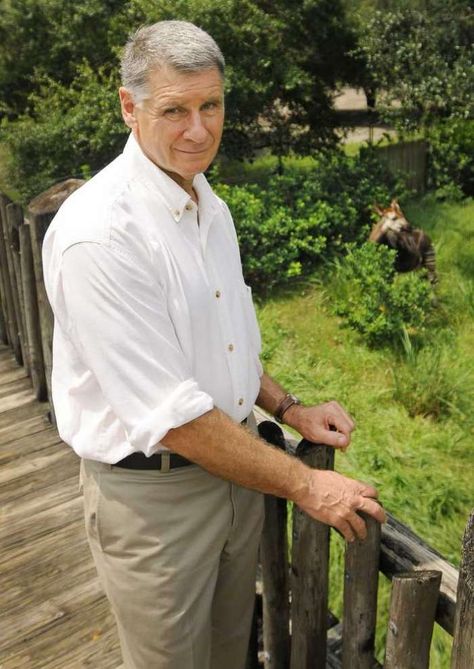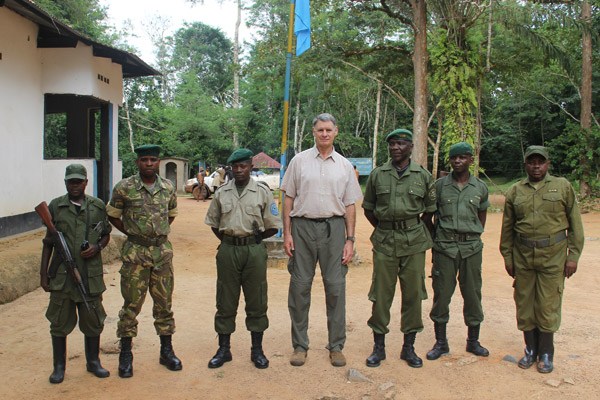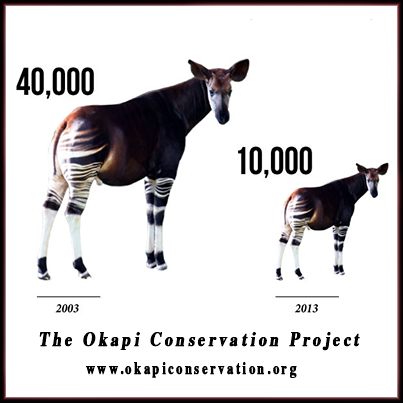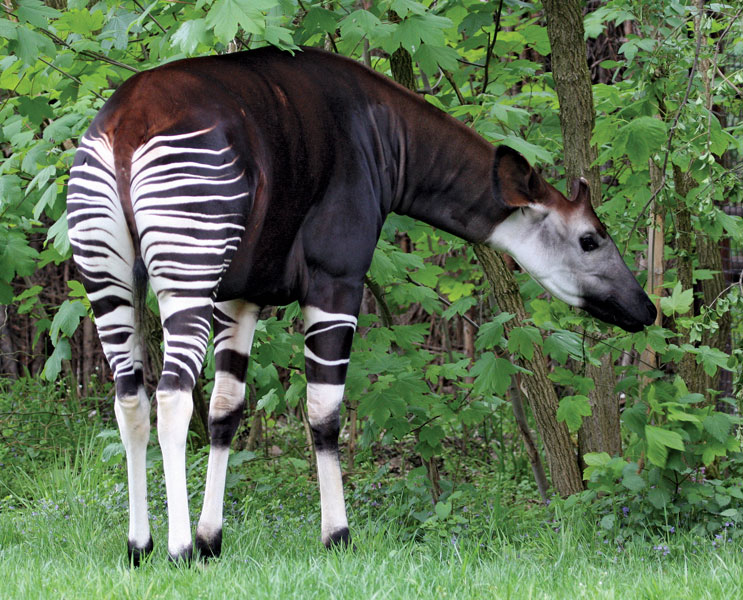John Lukas
Okapi guardian & founder of OCP
John Lukas (& the Okapi Conservation Project)
"For the world, the loss of the okapi would be the loss of a unique forest giraffe that has lived on earth for 7 million years, the last large mammal discovered in Africa by Western science and the symbol of all natural life in DRC". John Lukas
The discovery of the elusive rainforest okapi (or forest giraffe), once believed to be a mythical unicorn, was one of the most exciting taxonomic findings of the twentieth century.
This mysterious mammal lives deep inside the tropical forests of the Democratic Republic of the Congo (DRC) and has been known to the western world only since early 1900s. Some scientists called it “donkey-like,” others thought that the animal’s stripes made it more “zebra-like.” The debate was finally put to rest when explorer Harry Johnston, together with a group of the indigenous Mbuti pygmies, acquired the first complete specimen of an okapi (skeleton and skin) from DRC’s Ituri rainforest in 1901. Scientists soon confirmed that the okapi (Okapia johnstoni) is in fact the closest living relative of the giraffe. Found only in the Ituri rainforest of northeastern DRC, the okapi is a fully protected species under Congolese law. Unfortunately, the future of this striking large-bodied mammal is severely threatened by loss of habitat from deforestation and poaching for its skin and bushmeat. The okapi is currently listed as Endangered on the IUCN Red List.To protect this shy, giraffe-like animal, wildlife conservationist John Lukas founded the Okapi Conservation Project (OCP) in 1987.
OCP today manages the Okapi Wildlife Reserve, a 13,700-square-kilometer (5,290-square-miles) area of wilderness, occupying one-fifth of the Ituri Forest. The reserve is a UNESCO World Heritage Site, harboring the largest populations of forest elephants, okapi and chimpanzees in DRC, and is home to the indigenous Mbuti pygmies. OCP, managed by the non-profit Wildlife Conservation Global, trains and equips wildlife rangers in the reserve and works with the local communities to help improve their lives. It does so by helping develop sustainable incomes from agroforestry and by providing alternative sources of protein to reduce dependence on bushmeat hunting. OCP also works with local authorities to monitor and shut down illegal mines and logging operations.In June 2017 the OCP celebrated its 30th Anniversary. During the preceeding three decades the project team has seen both successes and challenges, from political unrest to the death of three key staff members in a car accident and a brutal rebel attack in 2012. Mai Mai rebels, led by the notorious poacher known as Morgan, attacked the headquarters of the Okapi Wildlife Reserve in 2012, killing six people and 14 captive okapis that were stationed at the headquarters as the species’ ambassadors to the local community.
Read the interview with John Lukas
(Courtesey Mongabay.com)Okapi Conservation Project
"Helping people makes friends for conservation in the places we need them most – in the heart of the most diverse forest in Africa and the only place okapi live in the wild on earth". - John Lukas.
The Okapi Conservation Project is located within the Ituri Forest, in the Democratic Republic of Congo. The Okapi Wildlife Reserve was created in 1992, encompassing 13,700 square kilometers, in 1996, it was designated as a United Nation's World Heritage Site.
"The preservation of the okapi is an issue of ecological sovereignty for the DRC. This places the country at the center of international conservation attention”. - Berce Disiki Nsafuansa, Director of Conservation.
Okapi Conservation Project (Video)
Go back to: Wildlife guardians & dedicated conservationists
ARTICLES OF INTEREST:
2024 Annual Report - Okapi Conservation Project (PDF)
Overcoming Danger and Fighting Climate Change to Protect Okapi and Forests by John Lukas - Dec 2021
2020 Year in Review - Okapi Conservation Project (video)
2020 Annual Report - Okapi Conservation Project (PDF)
DRC’s Okapi Wildlife Reserve gets new management partner in WCS - 2019



